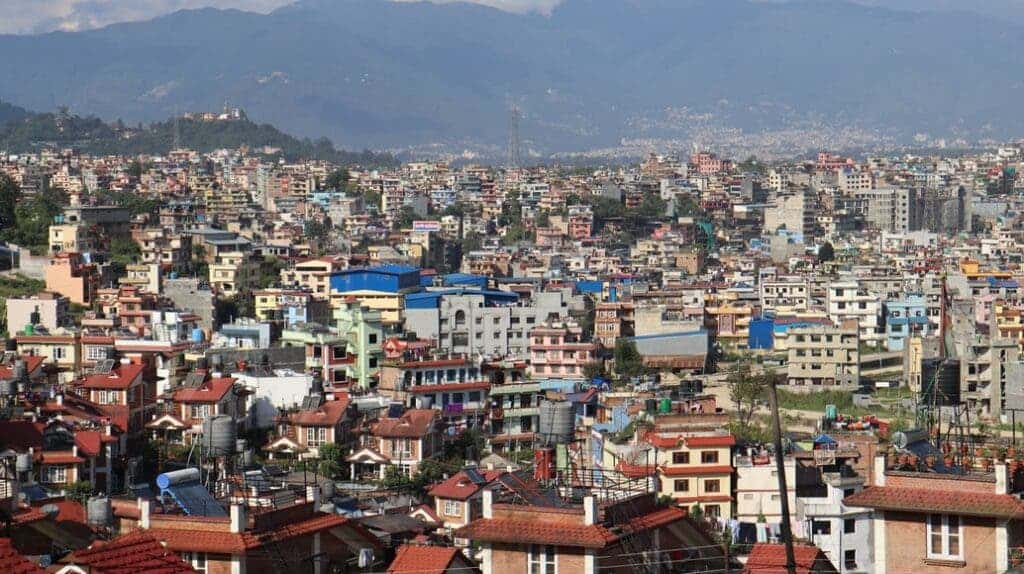Urbanization is the tendency for sizable numbers of people to move out of rural areas and congregate in cities. This phenomenon happens in large part because cities tend to offer people more amenities and economic advantages than rural areas do.
Urbanization, overall, brings many benefits – but it does also pose some problems that need solving. For starters, the climate crisis disproportionately affects urban areas, and the urban heat island effect can raise urban temperatures by several degrees. So what can we do?

It isn’t exactly news that rapid urbanization increases climate risk for billions of people; back in 2017, researchers at the United Nations (UN) warned us that this would be a problem. As it turns out, they were correct — since that prediction was originally published, we’ve witnessed extreme impacts such as severely flooded cities and cities that are literally sinking under their own weight.
A growing mountain of scientific evidence is showing that immediate action is needed to resolve the problems posed by the dangerous combination of urbanization and climate emergency.
Recent research suggests that low-carbon cities have the potential to mitigate environmental threats. The researchers have proposed four solutions for achieving these low-carbon cities:
1. Minimize the Footprint of Each City
The researchers at the Chinese Academy of Sciences utilized data from nineteen counties in Taiwan. They employed partial least squares (PLS) modeling methods as a means for identifying the most important factors that affected carbon emissions in the counties of interest.
To build their model, the researchers used data describing the size and density of each city, the currently existing land mix, the amount of urban sprawl, the level of industrial usage in each city, and the balance between housing and employment. They concluded that there were multiple factors that needed to be minimized in order for cities to enjoy a corresponding reduction in carbon emissions:
- City size
- Urban sprawl
- Industrial usage
- Transportation
2. Maximize Green Urban Spaces, Land Mix and Urban Density
The model also suggested several factors that should be maximized:
- Green urban spaces
- Land mix
- City density
These findings corroborate previous research. We already learned that trees can help to cool down cities — and that every tree in an urban environment counts. So here we have further confirmation of the importance of green coverage in urban areas.
3. Focus on Urban Transportation Systems
The researchers suggested “transit-oriented development” as a possible solution for reducing carbon emissions.

What, exactly, is transit-oriented development? The US Department of Transportation (DOT) website gives us an overview: It’s a situation where a transit system connects a community of people to nearby amenities including entertainment venues, commercial spaces, office buildings and residences. The closer together these accommodations are, the greater the potential is for the reduction of carbon emissions. The ideal is “walkable” cities where people can walk to work, stores, and many of the services they need.
Experts at the DOT point out that transit-oriented development is most likely to happen when governments make policies that encourage it. Tools they can utilize for this purpose include land use planning and zoning laws.
4. Engage in Conscious Urban Planning

None of the above-mentioned solutions will happen unless leaders step up to actively take charge of managing the urbanization process. The researchers summarize their findings by reporting that “appropriate urban policies and planning, such as compact cities, green cities, or transit-oriented development, might lower carbon emissions and thus further serve as useful strategies for building low-carbon cities.”
As things currently are, much of the world’s urbanization is happening haphazardly. It is true that some cities are employing urban and regional planners in hopes of making responsible use of their region’s resources; however, urban planning isn’t a universal priority across the globe. We need to reevaluate our priorities with the goal of actively managing our urban growth rather than allowing it to happen carelessly.
Other experts have weighed in on the issues independent of this research to express opinions that corroborate the findings presented in the summary. In an article posted at Urban.com.au, Professors Gabriela Quintana Vigiola and Heather MacDonald of the University of Technology Sydney’s Master of Urban Planning program point out that urban and regional planners are one critical key to solving the double-whammy problems of “climate change and limited resources” that disproportionately affect urban areas.
Professor Boyd Cohen of the EADA Business School in Barcelona, Spain also concurs. According to Cohen, urban planning appears to be the single most important means available to us for reducing fossil fuel pollution and consumption. He also points out that technology and clean energy for transportation have important roles to play in solving the problems caused by climate change and urbanization.
While the proposed solutions are likely to be viable ones, it will take a collaborative effort between governments and the public to actually implement them.
The paper “Crucial factors of the built environment for mitigating carbon emissions” will be published in the February 2022 edition of the journal Science of the Total Environment.


